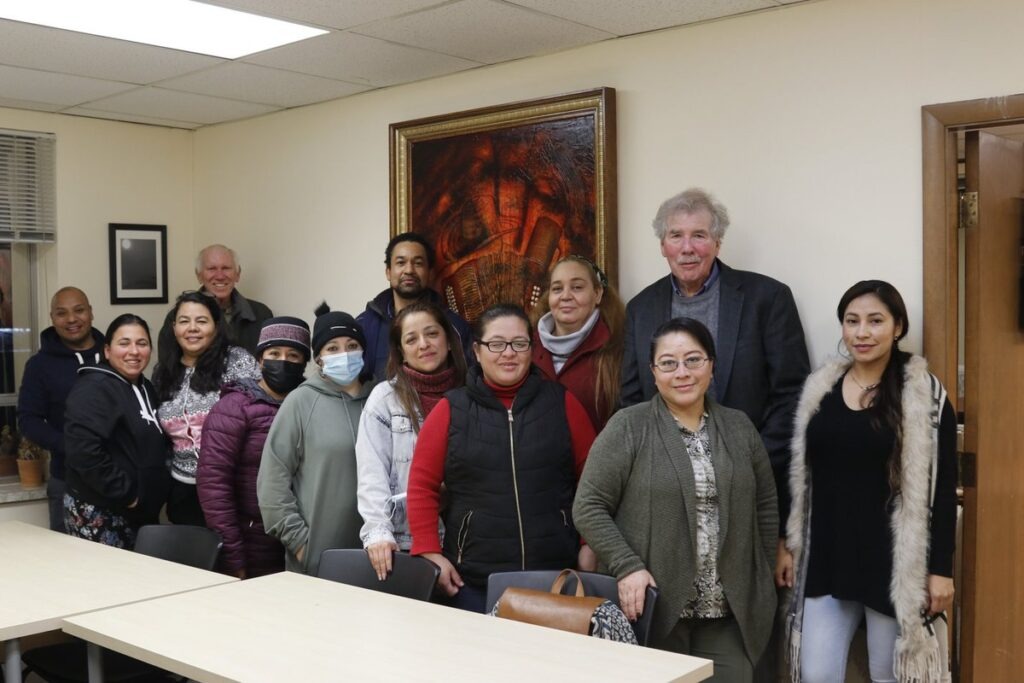
How can nonprofits help immigrants build community wealth? There are many answers to this question, but in Lynn, MA, our two organizations decided last year to try an experiment. Instead of creating an expensive, new staff-driven program, might it be possible, at very low cost, to expand an existing immigrant self-help mechanism—namely, the savings circle?
Nonprofit and public sector programs to promote savings are common. One of the more common forms is the matched savings account, often referred to as the individual development account, or IDA. In Indiana, for example, participating nonprofits in the state-funded network will match eligible low-income individuals’ savings at the rate of $3 per dollar saved, up to a maximum of $4,500. These programs can be very helpful for beneficiaries, but they can be expensive to operate (in the case of the Indiana program, $4,500 per saver benefitting from the program, plus staff expenses) and are also administratively complex, as a Boston Federal Reserve paper acknowledges.
At least for immigrants, we thought, surely it would be more effective to build on existing savings traditions, which brings us to our experiment in Lynn.
Lynn, for the uninitiated, is a small city a half hour north of Boston. About 40,000 of its roughly 100,000 residents are immigrants, mostly from Central America. Immigrant services reach some of these 40,000, but certainly not all of them. As such, self-help networks in immigrant communities are key.
One immigrant self-help tool is the saving circle, which often draws on traditions immigrants bring from their home countries. In Guatemala, as in Lynn and in communities across America with large Guatemalan populations, these groups are called cuchubales.
Where they exist, cuchubales have been very successful. But many immigrants remain unconnected to them. In response, our two groups—the Latino Support Network, a local community development corporation, and Grassroots Finance Action, a consortium of savings group experts—decided to test whether, with a small financial investment, the reach of these savings circles could be extended to immigrants in Lynn more broadly.
To launch an effort to expand access to savings circles, LSN recruited three Guatemalan women who had long participated in cuchubales in Lynn. Each received a $2,000 stipend to organize and manage a new cuchubal over nine months, starting in March 2022. In other words, the entire cost of the nine-month experiment was $6,000. Within weeks, each of the three women had organized a group—one with 30 members and two with 24. The organizers collected $200 per week—as was common in most cuchubales in Lynn—from the members of the new groups.
The money collected was paid to each member in turn according to a predetermined schedule. For the 24-member groups, payouts were $4,800 each. For the 30-member group, $6,000. The cycle ended when all members received their payouts.
We thought that $200 per week was a lot given that 42 percent of new group members and their families lived on $20,000 or less per year. Most worked in restaurants or as gardeners, daycare providers, or construction workers. A fifth owned a business such as a gardening business or daycare. Only 15 percent of participating families earned $70,000 or more. Nonetheless, there was not a single late payment.
With their payouts, savings circle participants were able to pay down predatory loans and plan for future expenses. Some of those without such debts invested in cars and housing. Collectively, the three groups saved and distributed an extraordinary $400,000, all of this catalyzed by a $6,000 investment in stipends and modest staff support. As the cycle ended, additional funding was secured, and a new funding cycle began. In this second cycle, 11 new members joined, while only two dropped out.

Informal Savings in Immigrant Communities
The story we share from Lynn is an example of the vast, invisible (to those who are not immigrants), informal financial system that provides a major source of capital with which to finance businesses, buy homes, and meet day-to-day needs. Estimates of the prevalence of informal savings circles in immigrant communities are hard to come by, but in some cities, access to such circles is widespread. For instance, a 2013 study carried out by the City of New York found that 74 percent of Mexican immigrants and 69 percent of Ecuadoran immigrants save through similar informal means. Given that there are 47 million immigrants in the United States, the amount saved and distributed through this informal financial system is likely in the tens of billions of dollars a year, and probably a lot more.
Research on informal savings groups in immigrant communities explores in detail how these groups operate and the role they play in their communities. Mexicans call these groups “tandas,” Kenyans “chamas,” Eritrean “Iquibs,” Bangladeshis “samites,” Cambodians “tontines,” and Nepalis “dhikutis.” While these names vary, the groups share similar operational principles.
Although most immigrants have bank accounts, they often trust their local savings groups more. But couldn’t you just set aside money on a weekly basis in a bank’s savings account and make the payments to yourself? In theory, sure. But data shows that savings circles are preferred in many immigrant communities. For example, in the 2013 survey conducted in New York City of Mexican and Ecuadorians immigrants, respondents were adamant that saving circles were better because:
- They force participants to be disciplined.
- They don’t charge interest.
- They accrue savings, not debt.
- They involve a system in which participants decide how to put their own money to use.
Savings circles work because they are based on traditions perfected over centuries in immigrants’ home countries. Different immigrant communities implement savings circles in different ways, but some common principles are:
- Disciplined savings—The savings circle structure establishes the expectation that making your payment to your group is an obligation.
- Mutual accountability—You can’t let other members down. Not making a payment when you are able to would be a form of social suicide.
- Mutual support—Another member will make a payment if you can’t, with the expectation that the favor will be returned. Other members often contribute to a member of the circle in the event of a death or illness.
How These Principles Were Employed in Lynn
The field research for the Cuchubal Initiative started over dinner in March 2022. A group made up largely of Guatemalan immigrants described how their cuchubales worked. Most extoled the virtues of the circles, but a few focused on the risks: What happens if someone takes their payout then refuses to continue paying? All in attendance agreed that there were many Guatemalan immigrants in Lynn who were not part of cuchubales but who could benefit. Based on this insight, the pilot project was launched.
A survey of new cuchubal members revealed that:
- Three quarters of the members were women.
- Only 20 percent had been members of cuchubales in the United States. The organizers were reaching immigrants previously disconnected from this vital self-help tool.
- Forty-two percent had annual family incomes of $20,000 or less.
- Half used their payouts to cancel high-interest loans, while 42 percent set aside money for future needs so they wouldn’t need to take on high-interest predatory loans or do without.
- Four in five planned to continue saving in their groups.
- When asked what they liked about their cuchubales, most said the groups “taught them to save,” with the rest mentioning the savings they accumulated and what they could do with it.
- Half wanted to participate in a WhatsApp group to communicate with other members and learn more about personal finance, strengthening links between members.
- After being members of the circles, about half wanted to participate in other LSN activities such as first-time homebuyers training.
Lessons for Other Communities?
Could the pilot in Lynn be replicated in other cities with large immigrant populations? We believe so. If structured similarly, a one-year pilot project would cost less than $10,000. In Lynn, the three organizers collected and distributed more than $400,000 over nine months, resulting in a 40-to-one ratio of savings accrued compared to the cost of organizing and supporting these groups. It is reasonable to expect that similar projects in other immigrant communities might achieve similar outcomes.
In thinking about replicating this model with other immigrant communities, we found five factors important in guiding our effort:
- Work with a local nonprofit that has deep ties to the immigrant community. LSN had hosted homebuyers and English classes for years in Lynn—and had also helped immigrants deal with immigration issues and secure employment. As a result, it was trusted in the community.
- Select savings circles organizers who have organized or participated in cuchubales for years, are trusted, and have strong community networks.
- Simplify the methodology. Given that organizers already understand the nuances of how informal savings groups work, ask them to simply do more of what they are already doing.
- Let the organizers develop and refine their strategy. Outside “experts” are too likely to impose their own ideas. It’s eye-opening to let go.
- Ask questions and keep learning.
The approach used in Lynn is a simple mechanism with which to put control over capital in the hands of immigrants and low-income communities. Savings circles are a low-cost, community-managed alternative to predatory lending as members build assets to address immediate needs in the short term and to later invest in businesses and housing.
The Cuchubal Initiative was built on the belief that immigrants know best how to address their needs. But as the experiment in Lynn illustrates, external funding, even if modest, can boost these self-help efforts, assisting immigrants who have yet to be reached by existing circles to join new ones.


0 Commentaires